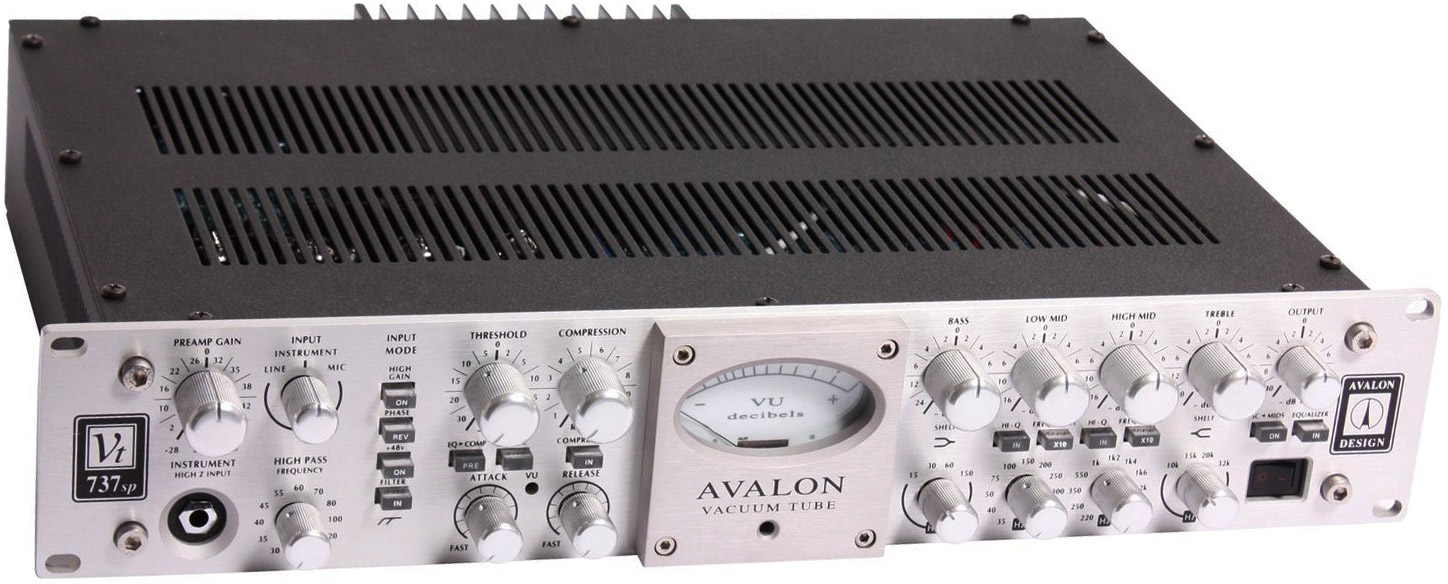Why do I need a microphone preamp?
The output volume of a microphone is very low. Most times, it’s too low to work with at all.
If you have a mic plugged straight into a Mixer or Audio Interface without a preamp, there will not be enough signal. This will result in no sound at all or extremely quiet and poor quality sound.
Modern day Mixers, Audio Interfaces and Audio Processing Units (compressors, EQs, FX, ect) are designed to accept a signal of +4dBu. The volume of typical microphone signal is -65dBu to -40dBu.
This is why a microphone preamp (mic pre) is needed.
Does it matter which microphone preamp I get?
Microphone preamps are controlled by just one gain knob and that’s it. Very simple! If all they do is increase the volume, it doesn’t really matter which one you get, right? …… Wrong.
Because mic pres boost the signal so much, they can really affect the sound. Similar to how the sound from different microphones vary.
A mic pre can color the sound to make it sound warmer, shimmery, fatter, brighter, darker, brittle, muddy, dirty or just plain bad.
They can also keep the sound very clean, transparent, neutral & accurate.
Types of microphone preamps:
Solid State Preamps are small and maintenance free. The nicer ones can sound incredibly accurate and transparent. Generally they sound more neutral than a tube preamp. Solid State pres maintain a very consistent sound a low volumes and high volumes. However, if you push them to the point of distorting, the distortion they produce sounds very bad. (this is called clipping)
Tube Preamps have glass tubes in them. Over time tubes may fail and need to be replaced . Many people try putting in different types of tubes to get different tones from their preamp. Tube preamps are larger, they produce more heat and they require more electricity than solid state pres. Tube preamps generally add color to the sound. They have the potential to make things sound very pleasing. As you turn up a tube preamp, the sound changes. The harder you push it, the more dirty the sound gets. The distortion a tube preamp produces is musical and generally warm sounding. So, you don’t have to worry as much about clipping your tube pre. In fact, many people purposefully make their tube preamps distort to achieve certain sounds.
On the vast majority of soundboards (mixing consoles) these days, each channel is equipped with a solid state preamp. The microphone signal runs through the preamp before going through the rest of the board. (EQ, Aux Outs, Fader) Many audio recording interfaces come with solid-state preamps built in. I’ve also recently seen a couple of recording interfaces that had tube preamps in them. (solid state pres are much more common though)
Many standalone preamps include additional features like:
- Signal Indicator Lights or VU Meter
- Clip Indicator Light
- Phantom Power
- Pad
- Low Cut
- Phase Reverse
- Unbalanced Instrument Input
- Equalizer
- Compressor
- Impedance Selector
When it comes to microphone preamps, you get what you pay for! Don’t expect to get an outstanding studio quality pre for $100.



